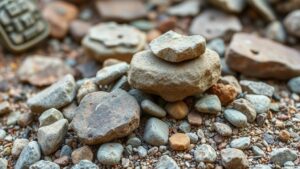How to Use Aerial Drones for Surveying Remote Treasure Hunting Sites
How to Use Aerial Drones for Surveying Remote Treasure Hunting Sites
The advent of aerial drone technology has revolutionized various industries, including archaeology and treasure hunting. Drones offer unprecedented capabilities for surveying remote locations that are difficult or impossible to access by foot. This article explores the methods and advantages of using aerial drones for surveying treasure hunting sites, providing practical information and insights into effective strategies.
Understanding Drone Technology
Drones, also known as unmanned aerial vehicles (UAVs), are equipped with various sensors and imaging technologies that provide detailed aerial perspectives. Common types of drones used in surveying include fixed-wing drones and multi-rotor drones. Fixed-wing drones are well-suited for covering large areas efficiently, while multi-rotor drones excel in precision flying, allowing for detailed inspections of smaller sites.
The integration of Geographic Information Systems (GIS) with drone technology enhances data analysis and mapping capabilities. Drones can be equipped with high-resolution cameras, LiDAR systems, or multispectral sensors, enabling them to gather valuable data related to topography, vegetation, and potential hidden anomalies below the surface.
Key Benefits of Using Drones in Treasure Hunting
- Efficiency: Drones can cover large areas in a fraction of the time it would take for manual surveying. For example, a drone can map an area of several square kilometers in under an hour, compared to several days of ground surveying.
- Cost-Effectiveness: Traditional surveying methods can be costly and labor-intensive. Drones reduce the need for extensive manpower and equipment, significantly lowering operational costs.
- Access to Remote Areas: Drones can easily access difficult terrains–such as dense forests, mountains, and wetlands–where traditional vehicles might struggle.
- Data Quality: The high-resolution imagery captured by drones provides detailed photographic evidence and data that can be analyzed for geological and archaeological features.
Preparation for Aerial Drone Surveying
Before deploying a drone for surveying remote treasure hunting sites, several preparatory steps should be taken:
- Research and Planning: Identify potential treasure sites using historical records and archaeological databases. Understanding the areas history can guide the search for anomalies.
- Obtain Necessary Permits: Ensure compliance with local laws and regulations concerning drone usage. This may include obtaining special permits for flying in certain areas or during specific times.
- Select the Right Drone: Choose a drone that fits the specific requirements of the survey. Consider factors such as battery life, camera resolution, and payload capacity for additional sensors.
- Pre-Flight Checks: Conduct thorough inspections of the drones equipment, including battery levels, GPS functionality, and sensor calibration.
Conducting the Aerial Survey
Once preparations are complete, follow a systematic approach for conducting the survey:
- Flight Planning: Use flight planning software to define the area of interest and set flight patterns. This software allows for automated flight paths, ensuring comprehensive coverage.
- Data Collection: Execute the flight plan and monitor the drones performance. Collect high-resolution images or LiDAR data as determined by the type of survey.
- Data Post-Processing: Use specialized software to stitch together images, create 3D models, and analyze the data collected. Tools like Pix4D or DroneDeploy can be instrumental in this phase.
Case Study: Archaeological Drones in Action
In a real-world example, a team of archaeologists utilized drones in a remote area of South America with suspected ancient gold artifacts buried within the landscape. By flying drones equipped with multispectral cameras, the team was able to detect differences in vegetation health indicative of potential archaeological remains beneath the surface.
The data collected allowed the researchers to identify several sites for excavation, which preliminary ground checks confirmed contained significant archaeological artifacts, demonstrating a successful application of drone technology in treasure hunting.
Challenges and Considerations
While the advantages of using drones for surveying are significant, several challenges must be addressed:
- Weather Constraints: Drones are susceptible to adverse weather conditions. Wind, rain, and low visibility can hinder operations, requiring careful consideration of weather forecasts.
- Technical Skills Required: Operating drones and interpreting data requires a certain level of technical proficiency. Individuals or teams may need additional training or expertise.
- Privacy and Ethical Concerns: Surveying land for treasure may raise ethical concerns regarding the excavation and ownership of discovered artifacts. It is vital to act in accordance with local laws and cultural sensitivities.
Actionable Takeaways
For treasure hunters interested in leveraging drone technology, consider the following actionable steps:
- Invest in proper training for drone operation and data interpretation to maximize the benefits of aerial surveying.
- Engage with local authorities and historians to ensure compliance with legal requirements and ethical guidelines.
- Stay updated on drone technology advancements and software improvements, which can further enhance data collection and analysis capabilities.
To wrap up, aerial drones represent a game-changing tool in the survey and exploration of remote treasure hunting sites. By combining cutting-edge technology with thorough preparation and careful implementation, treasure hunters can significantly increase their chances of discovery while conducting responsible and informed surveys.


